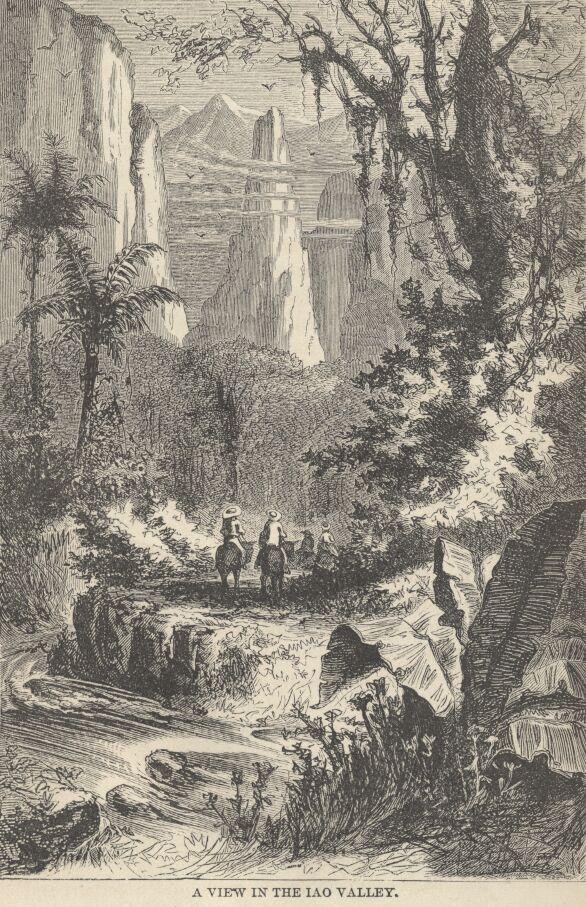In due course of time our journey came to an end at Kawaehae (usually pronounced To-a-hi—and before we find fault with this elaborate orthographical method of arriving at such an unostentatious result, let us lop off the ugh from our word “though”). I made this horseback trip on a mule. I paid ten dollars for him at Kau (Kah-oo), added four to get him shod, rode him two hundred miles, and then sold him for fifteen dollars. I mark the circumstance with a white stone (in the absence of chalk—for I never saw a white stone that a body could mark anything with, though out of respect for the ancients I have tried it often enough); for up to that day and date it was the first strictly commercial transaction I had ever entered into, and come out winner. We returned to Honolulu, and from thence sailed to the island of Maui, and spent several weeks there very pleasantly. I still remember, with a sense of indolent luxury, a picnicing excursion up a romantic gorge there, called the Iao Valley.

The trail lay along the edge of a brawling stream in the bottom of the gorge—a shady route, for it was well roofed with the verdant domes of forest trees. Through openings in the foliage we glimpsed picturesque scenery that revealed ceaseless changes and new charms with every step of our progress. Perpendicular walls from one to three thousand feet high guarded the way, and were sumptuously plumed with varied foliage, in places, and in places swathed in waving ferns. Passing shreds of cloud trailed their shadows across these shining fronts, mottling them with blots; billowy masses of white vapor hid the turreted summits, and far above the vapor swelled a background of gleaming green crags and cones that came and went, through the veiling mists, like islands drifting in a fog; sometimes the cloudy curtain descended till half the canon wall was hidden, then shredded gradually away till only airy glimpses of the ferny front appeared through it—then swept aloft and left it glorified in the sun again. Now and then, as our position changed, rocky bastions swung out from the wall, a mimic ruin of castellated ramparts and crumbling towers clothed with mosses and hung with garlands of swaying vines, and as we moved on they swung back again and hid themselves once more in the foliage. Presently a verdure-clad needle of stone, a thousand feet high, stepped out from behind a corner, and mounted guard over the mysteries of the valley. It seemed to me that if Captain Cook needed a monument, here was one ready made—therefore, why not put up his sign here, and sell out the venerable cocoanut stump? (Roughing It)